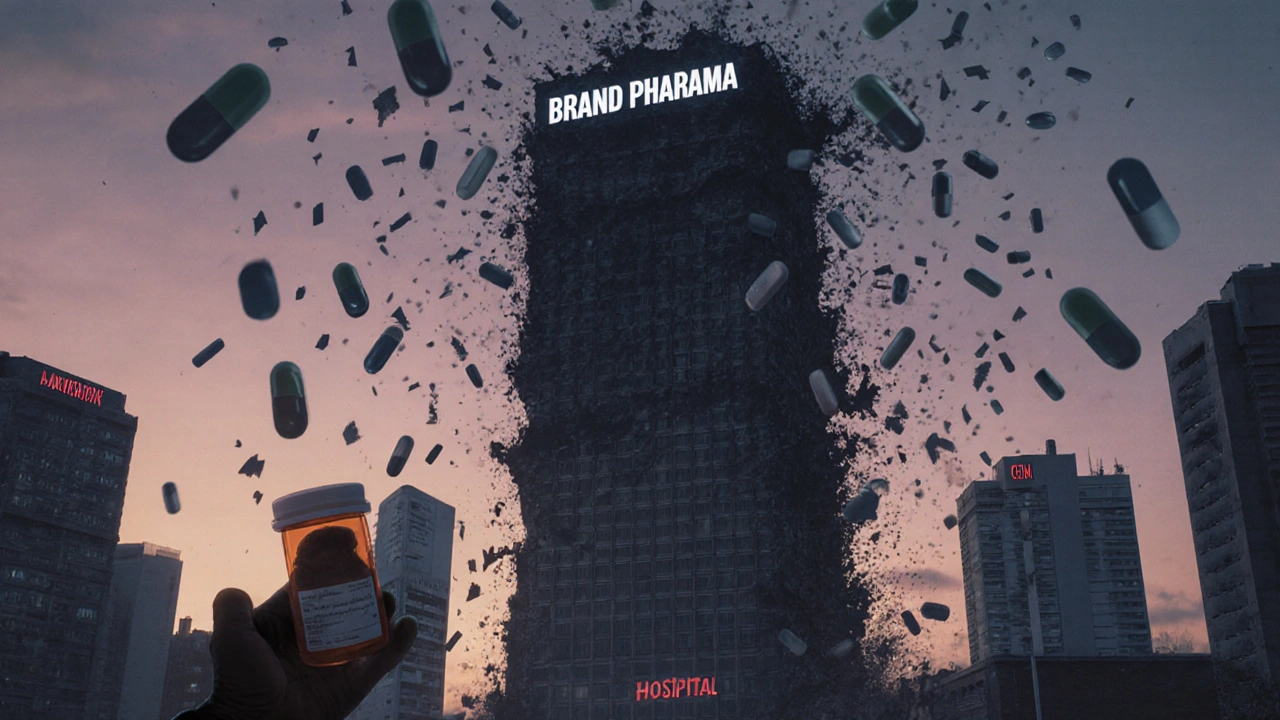
When a brand-name drug loses its patent, everything changes. The price doesn’t just drop a little-it collapses. Within months, the same medicine you once paid $500 for can be bought for $20. This isn’t magic. It’s the result of generic drugs entering the market. And while patients and insurers celebrate the savings, brand manufacturers face a financial earthquake known as the patent cliff.
The Rise of Generics: 90% of Prescriptions, 20% of Spending
In the U.S., generics make up about 90% of all prescriptions filled. But they account for only about 20% of total drug spending. That gap tells you everything you need to know. The system works the way it’s supposed to: when competition kicks in, prices fall. The FDA says generics cost 80-85% less than their brand-name versions. That’s not a guess-it’s backed by data from millions of prescriptions. In 2014 alone, generics saved the U.S. healthcare system $253 billion. By 2023, those savings had grown to an estimated $330 billion annually. This isn’t just about cost. It’s about access. Without generics, millions of people wouldn’t be able to afford their medications. A diabetic on insulin, a heart patient on statins, a cancer survivor on maintenance therapy-all rely on generics to keep treatment sustainable. But behind those savings is a quiet battle between companies that innovate and companies that copy.How the System Was Built: The Hatch-Waxman Act
The modern generic drug system didn’t happen by accident. It was designed in 1984 with the Hatch-Waxman Act. This law struck a deal: brand manufacturers get extended patent protection to make up for time lost during FDA approval, and in return, generic companies get a faster, cheaper path to market. They don’t have to repeat expensive clinical trials. They just need to prove their version works the same way. It was meant to be a balance. Innovation gets protected. Competition gets enabled. But over time, the scale tipped. Brand manufacturers found ways to delay generics. Generic companies found ways to game the system. And the middlemen-pharmacy benefit managers, or PBMs-started taking bigger cuts.The Patent Cliff: When Revenue Vanishes Overnight
For brand manufacturers, the moment a patent expires is like a dam breaking. Revenue can drop 80-90% in the first year. Take Humira, the top-selling drug in the world for years. When its patent expired in 2023, sales plunged. Companies that built their entire business around one blockbuster drug suddenly had to scramble. Some respond by launching their own generic version-an “authorized generic.” Pfizer did this with its cholesterol drug Lipitor. Novartis spun off its generics division, Sandoz, as a separate company. Others shift focus: invest in new drugs, move into biologics, or target niche markets where generics can’t easily compete. But not every company can adapt. Smaller firms without the R&D budget or global distribution network often get crushed. Stock prices drop. Layoffs follow. Investors panic. The patent cliff isn’t just an economic event-it’s a corporate survival test.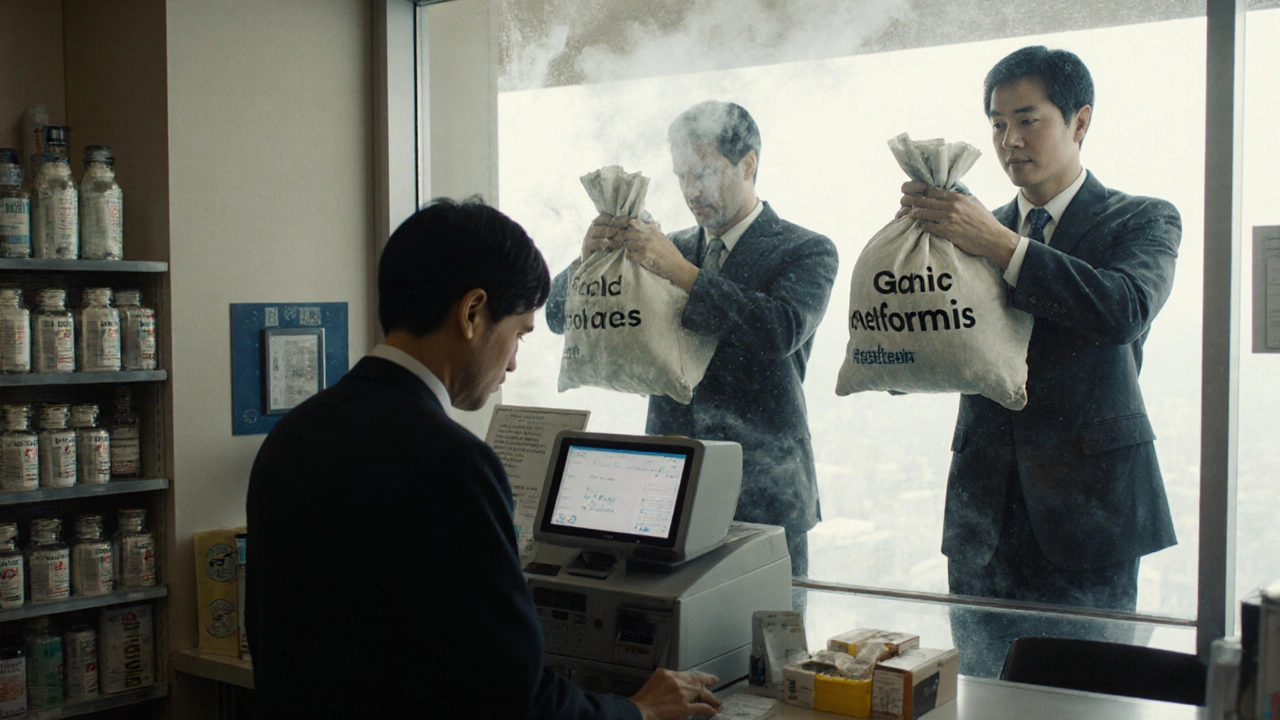
Generics Don’t Just Compete-They Crush Prices
The more generic makers enter the market, the lower prices go. One or two competitors? Prices drop about 30-40%. Three or four? Down another 20%. By the time six or seven companies are selling the same pill, prices can be 95% below the original brand price. The FDA tracked 2,400 new generic drugs approved between 2018 and 2020. Their data showed that even with just a few competitors, generic prices quickly fell below the brand’s price. And the decline doesn’t stop. Over three years, prices keep falling-sometimes by another 50%. But here’s the catch: the savings don’t always reach the patient. PBMs negotiate rebates with generic manufacturers, then pass on only part of that discount to insurers or patients. Sometimes, pharmacies lose money selling generics because the reimbursement rate from PBMs is lower than what they paid to buy the drug. That’s why you’ll hear pharmacists complain about being forced to sell pills at a loss.Brand Tactics: Pay-for-Delay, Product Hopping, Patent Thickets
Brand manufacturers aren’t sitting idle. They’ve developed a playbook to protect their profits. One tactic: “pay-for-delay.” A brand company pays a generic maker to hold off on launching its version. These deals are legal-for now. But they cost consumers. The Congressional Budget Office estimates they add $3 billion a year to out-of-pocket costs. Blue Cross Blue Shield says these settlements drive up total drug spending by nearly $12 billion annually. Another: “product hopping.” A company slightly changes its drug-a new pill shape, a different dosage form-and gets a new patent. Patients are switched over, and the original version loses its market. This happened with drugs like Nexium and OxyContin. The FDA and FTC have called this out, but it’s still common. Then there’s “patent thickets.” Instead of one patent, a brand company files dozens-covering everything from the chemical compound to the packaging to the manufacturing process. Each one adds a layer of legal protection. The CBO says eliminating these thickets could save $1.8 billion over ten years.The Hidden Cost: Who Really Pays?
It sounds simple: generics = cheaper. But the reality is messier. Patients often pay more than they should. A 2022 study from the Schaeffer Center at USC found that people pay 13-20% more for generics than they should because of opaque pricing by PBMs. Insurers pay inflated prices. Pharmacies get squeezed. And the manufacturers? Many generic makers are now owned by just a few big players-Teva, Mylan, Sun Pharma. Consolidation means less competition, which means prices don’t drop as fast as they should. Even worse: supply shortages. When margins are razor-thin, companies cut corners. A generic maker might stop producing a low-profit drug if it’s too hard to make. That’s how we get shortages of antibiotics, insulin, or blood pressure meds. The FDA warns that this pressure on manufacturers is leading to quality risks and disruptions.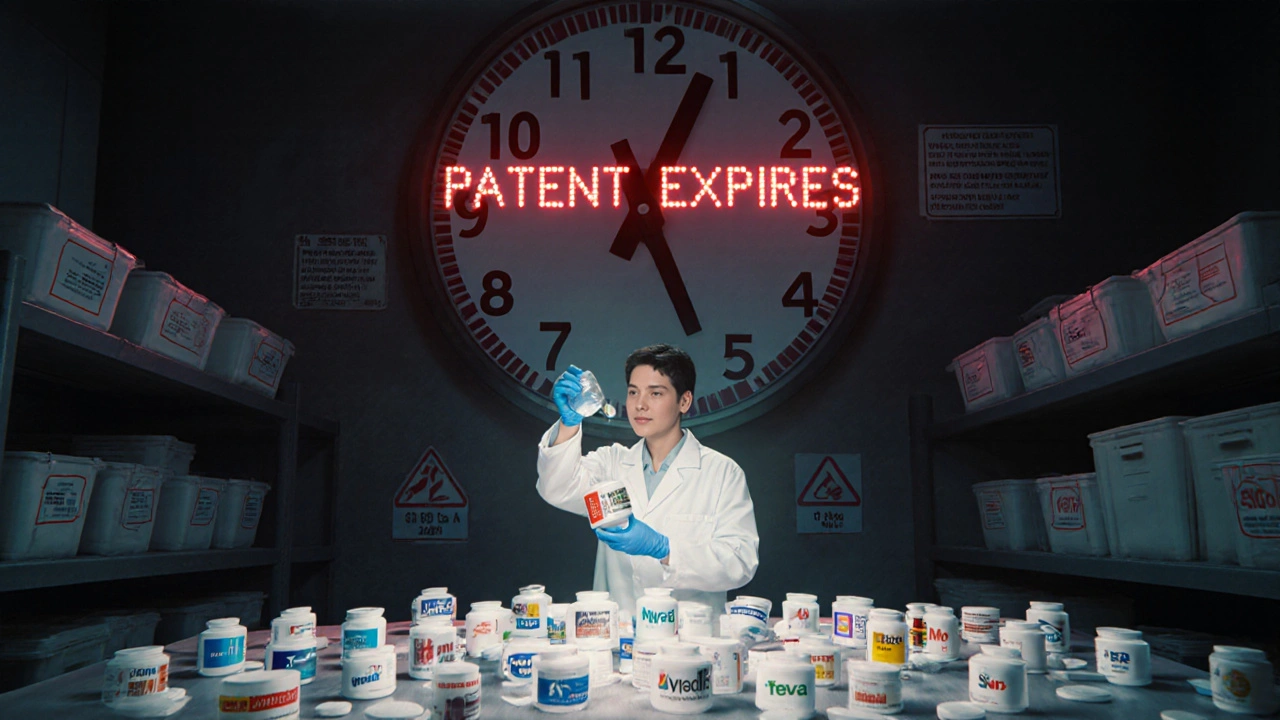
What’s Next? Legislative Pressure and Market Shifts
Congress is starting to act. Bipartisan bills are moving to ban pay-for-delay deals. If passed, they could save $45 billion over ten years. The FDA’s Generic Drug User Fee Amendments (GDUFA), renewed in 2022, is speeding up approvals with $1.1 billion in industry fees through 2027. Meanwhile, the market is shifting. By 2028, an estimated $400 billion in brand drug revenue will be at risk from patent expirations. That’s more than the entire annual budget of the CDC. Companies are already preparing. Some are shifting to biologics-complex drugs that are harder to copy. Others are moving into rare disease treatments where pricing power remains high. But the core tension won’t disappear. Society wants affordable medicine. Investors want profits. Innovation needs funding. Generics solve one problem but create others. The challenge isn’t choosing between brands and generics. It’s building a system where both can coexist without breaking the bank-or the patients.Real-World Impact: A Pharmacist’s Perspective
In a small pharmacy in Manchester, a pharmacist fills a prescription for metformin-a generic diabetes drug. The wholesale cost: $3. The patient’s copay: $15. The PBM keeps $10. The pharmacy makes $2. After paying staff, rent, and utilities, they’re barely breaking even. Meanwhile, the brand version of that same drug? Still on the market in a few countries, protected by patents. Priced at $120. Covered by insurance. No copay for the patient. The system is broken. It rewards complexity over fairness. This isn’t theoretical. It’s happening every day. Generics saved the system from collapse. But without transparency, accountability, and real competition, those savings won’t reach the people who need them most.Why are generic drugs so much cheaper than brand-name drugs?
Generic drugs are cheaper because they don’t need to repeat expensive clinical trials. The brand manufacturer already proved the drug is safe and effective. Generic makers only need to show their version works the same way. That cuts development costs by 80-90%. They also face intense competition-dozens of companies making the same pill-so they compete on price, not marketing.
Do generic drugs work as well as brand-name drugs?
Yes. The FDA requires generics to have the same active ingredient, strength, dosage form, and route of administration as the brand. They must also meet the same strict quality standards. Studies show they work just as effectively. The only differences are in inactive ingredients-like color or filler-which don’t affect how the drug works.
What is the patent cliff and why does it matter?
The patent cliff is the sharp drop in revenue a brand drug manufacturer faces when its patent expires and generics enter the market. Revenue often falls by 80-90% in the first year. This forces companies to pivot-launching their own generics, developing new drugs, or acquiring other businesses. It’s a financial crisis for companies that rely on one blockbuster drug.
Why do patients sometimes pay more for generics than expected?
Pharmacy benefit managers (PBMs) control how much pharmacies get paid for generics. They negotiate rebates with manufacturers but don’t always pass the savings to patients. Sometimes, the reimbursement rate is lower than the pharmacy’s cost, forcing them to charge more. Opaque pricing and middlemen markups mean patients often pay more than the actual wholesale price of the drug.
What are pay-for-delay deals and why are they controversial?
Pay-for-delay deals happen when a brand drug company pays a generic manufacturer to delay launching its cheaper version. These deals keep prices high and block competition. The FTC and CBO estimate they cost consumers $3 billion a year in higher out-of-pocket costs. They’re legal but widely criticized as anti-competitive. New legislation aims to ban them.
Can generic drug shortages affect patient care?
Yes. When profit margins are tiny, manufacturers may stop making low-demand or hard-to-produce generics. This leads to shortages of essential drugs like antibiotics, insulin, or blood pressure medications. The FDA has tracked hundreds of shortages in recent years, many tied to consolidation in the generic industry and cost-cutting pressures. These shortages can delay treatment and force patients to use more expensive alternatives.
Are there any brand-name drugs that don’t have generic versions?
Yes. Complex drugs like biologics, injectables, and inhalers are harder and more expensive to copy. These are called “complex generics” or “biosimilars.” Even after patents expire, it can take years for generics to enter the market. For example, insulin analogs and certain cancer drugs still have very limited generic competition. That’s why prices for these drugs remain high even decades after launch.

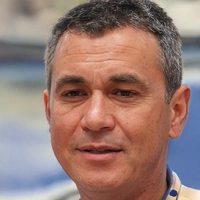
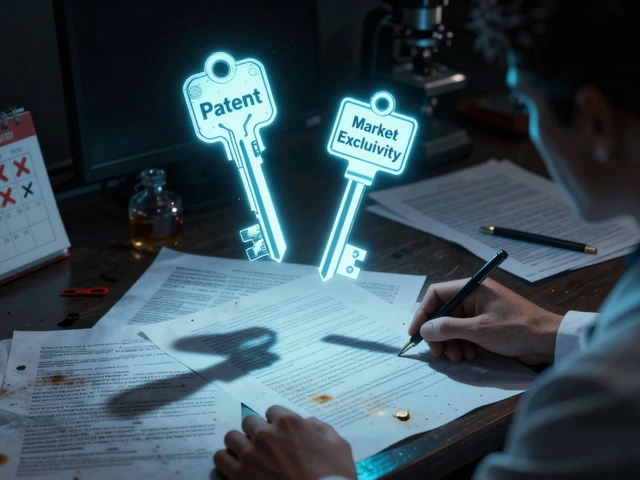
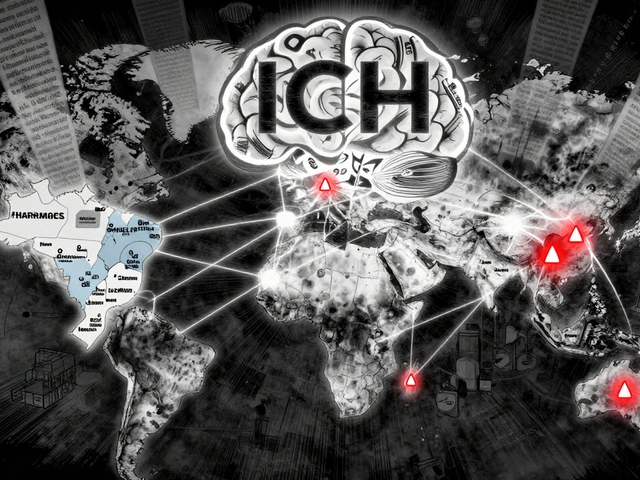

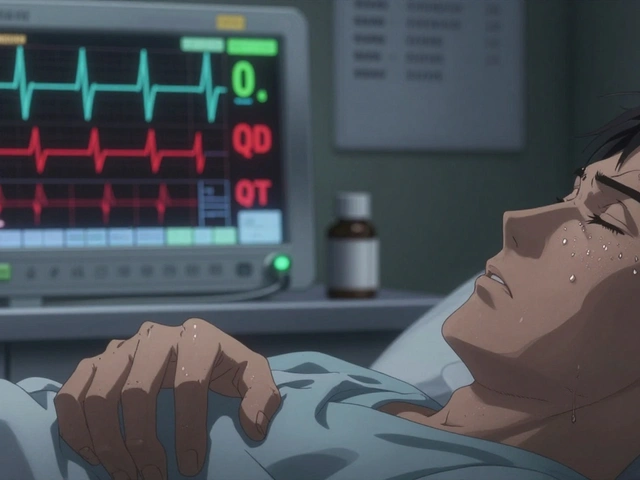

8 Comments
OMG this is so real. I pay $15 for metformin and my friend gets it for $3 at Costco-why am I getting screwed? PBMs are the real villains here. My grandma’s insulin bill used to be $400, now it’s $35 thanks to generics, but my pharmacy still loses money on it. Someone’s making bank and it ain’t us.
Generics are great but let’s be real-big pharma isn’t the bad guy. They took the risk. Without them, we wouldn’t have the drug in the first place. And now some guy in India makes a pill for $0.10 and sells it for $5 and everyone cheers? We need to reward innovation, not punish it. 🤷♂️
Y’all act like generics are some kind of miracle but let me tell you something. In SA we got generics that look like candy and taste like dirt. The FDA? That’s a US luxury. Half the time these pills don’t even dissolve right. You think it’s cheap? It’s just dangerous with a price tag. The system ain’t broken-it’s just exported the problem
It’s not just PBMs-it’s the entire supply chain. Pharmacies are forced to accept reimbursements below cost because of contract terms they can’t negotiate. Generic manufacturers are squeezed because they can’t raise prices even when raw materials spike. Patients are confused because the sticker price doesn’t reflect the actual negotiated rate. And no one-no one-is being transparent. This is a systemic failure, not a conspiracy.
It is imperative to acknowledge that the Hatch-Waxman Act established a necessary equilibrium between intellectual property rights and market accessibility. However, the current market dynamics reveal a significant erosion of this equilibrium due to regulatory arbitrage, consolidation among generic manufacturers, and the ascendance of pharmacy benefit managers as de facto price setters. Consequently, the intended cost-savings mechanism has been subverted by structural inefficiencies that undermine both consumer welfare and sustainable innovation.
So generics are cheaper… but my pharmacist still hates me? Cool. I’ll just keep paying $120 for the brand name. At least I don’t have to feel guilty about supporting a broken system. 😴
It’s not merely about cost-it’s about epistemic hegemony in pharmacology. The FDA’s bioequivalence standards are a neoliberal construct that privileges quantifiable equivalence over ontological integrity. Generics are statistically identical, yes-but they lack the phenomenological resonance of the original formulation. The brand drug carries the weight of R&D, of human suffering, of scientific dignity. A pill is not just a molecule-it’s a narrative. 🌌💊
Just want to add: the real win is how fast the FDA is approving generics now. GDUFA funding has cut approval times by nearly 40% since 2012. More competition = faster price drops. And yes, PBMs are a mess-but state-level transparency laws are starting to change that. Keep pushing for reform, not despair. We’re making progress, even if it’s slow.